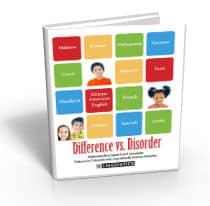Who are accent modification programs for?
I love accents. They are a part of one’s identity and culture. Everyone has some type of an accent and most of the time accents do not disrupt communication. Sometimes, though, accents can make it difficult for people to understand one another. Many people who come to the United States for work or school may feel a need to change their accent so they can more comfortably interact in their communities and advance themselves in the work place.
Speech Pathologists have a huge role to play in Accent Modification.
We want to be clear that there is no “right” or “wrong” way to speak. This is why we prefer the term Accent Modification to Accent Reduction, which suggests there is a correct, “accentless” way to speak. English Accent Training is another term that is used. While we most frequently help people with accents in English, accent modification can also be applied to other languages. I recently listened to a Texas politician conduct a television interview in Spanish. I applaud him for speaking Spanish but with a little support in accent modification, his speech would have been more effective.
Is there a difference between Accent Reduction and Accent Modification?
While the term accent reduction is still used widely, accent modification is seen to better define all the reasons someone would change their accent. For example; while enhancing public speaking skills is not at the top of everyone’s list, it is critical for some. Speech-language pathologists with experience with public speaking incorporate elements of effective public speaking into accent reduction programs. Many of these tips can support effective interpersonal communication as well. We chose to use Accent Reduction in this article due to feedback from clients in our clinic who wanted help but couldn’t find any because they were searching for “accent reduction.”
Did you know that more than half of the world’s population is bilingual?
The bilinguals of the world speak many combinations of languages and those languages interact with each other to produce many different accents. We recently did a presentation at a conference where we played audio clips of speakers of English as a second language who had different language backgrounds. The crowd successfully guessed that they were native speakers of Vietnamese, Spanish, and Russian. When we asked how they knew, most said they weren’t sure…they could just tell.
Take a listen.
Could you guess the native languages of these speakers? The first was Vietnamese, the second was Russian, and the third was Spanish. Now let’s look at just how it is that we can “guess” their native languages.
How Languages Differ
The sounds systems of languages differ in many ways, including which consonants and vowels are used, which sounds can occur at the beginnings and ends of words, whether two consonant sounds can occur together, the number of syllables a word can have, where the stress of words falls, the intonation and its meaning, the rhythm, and so on. Each language has a unique set of these features. When someone learns a second language, these features are often carried over from their native language to their second language. This is what creates what we think of as an accent. Understanding these differences can help us develop an effective accent modification program.
How does accent reduction training work?
Step 1: Compare and contrast the native language with English
Step 2: Record our clients in different speaking situations.
Step 3: Evaluate which features of the native language are used when speaking English.
Step 4: Teach our clients to hear the differences between English produced with and without influences from another language.
Step 5: Show our clients how to change productions one feature at a time and provide opportunities to practice.
Correctly Targeting Accent Reduction Goals
We also realize that there are times when it is important to make your point well, speak clearly, and appeal to those in the crowd. While enhancing public speaking skills is not important to many people seeking accent reduction support, it is critical for some.
Accent reduction is not a one-size-fits-all program. The program should be individualized based on the client’s native language, reason for seeking training, and workplace needs. An effectively designed program combined with a motivated client will yield positive results.
Read More:





